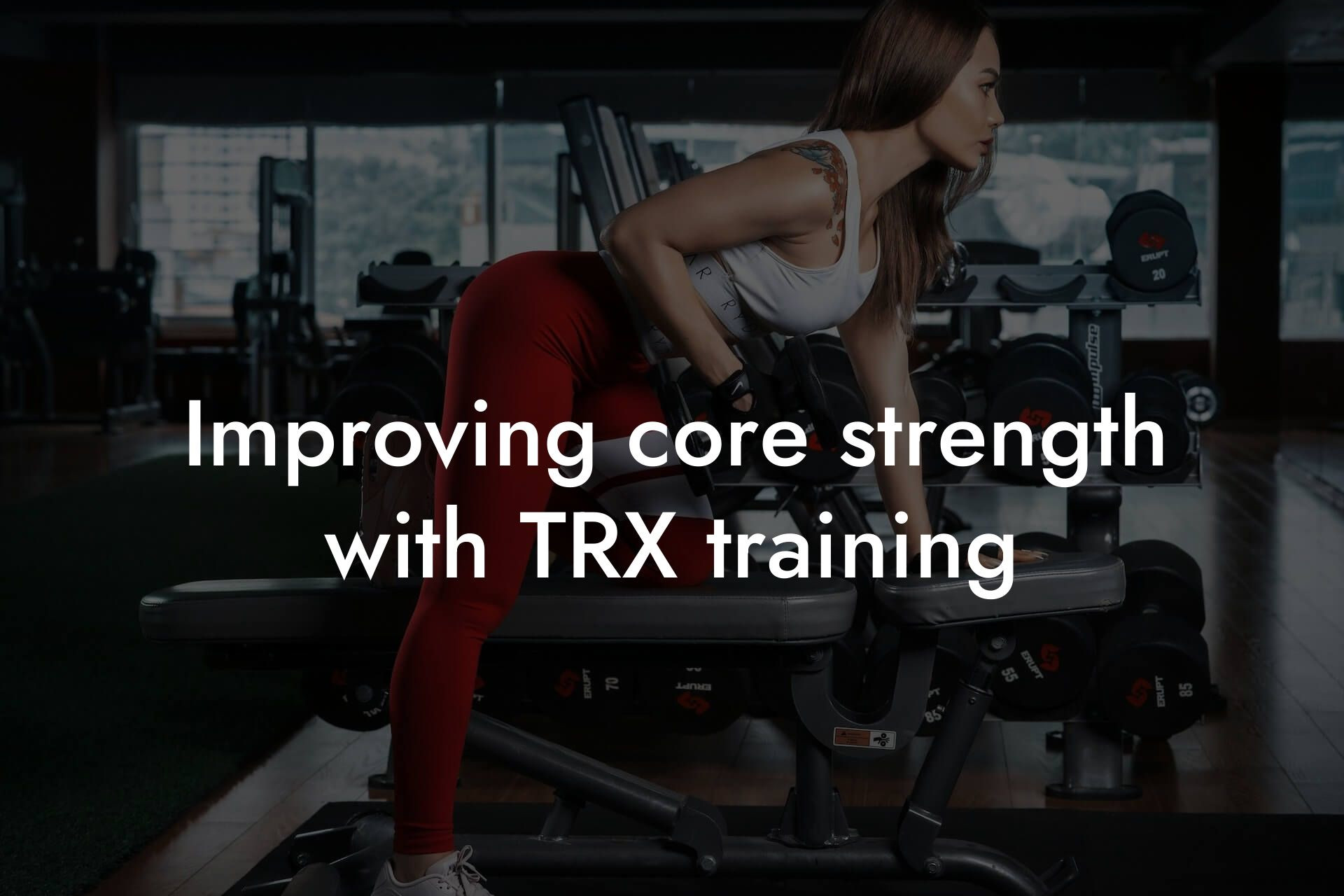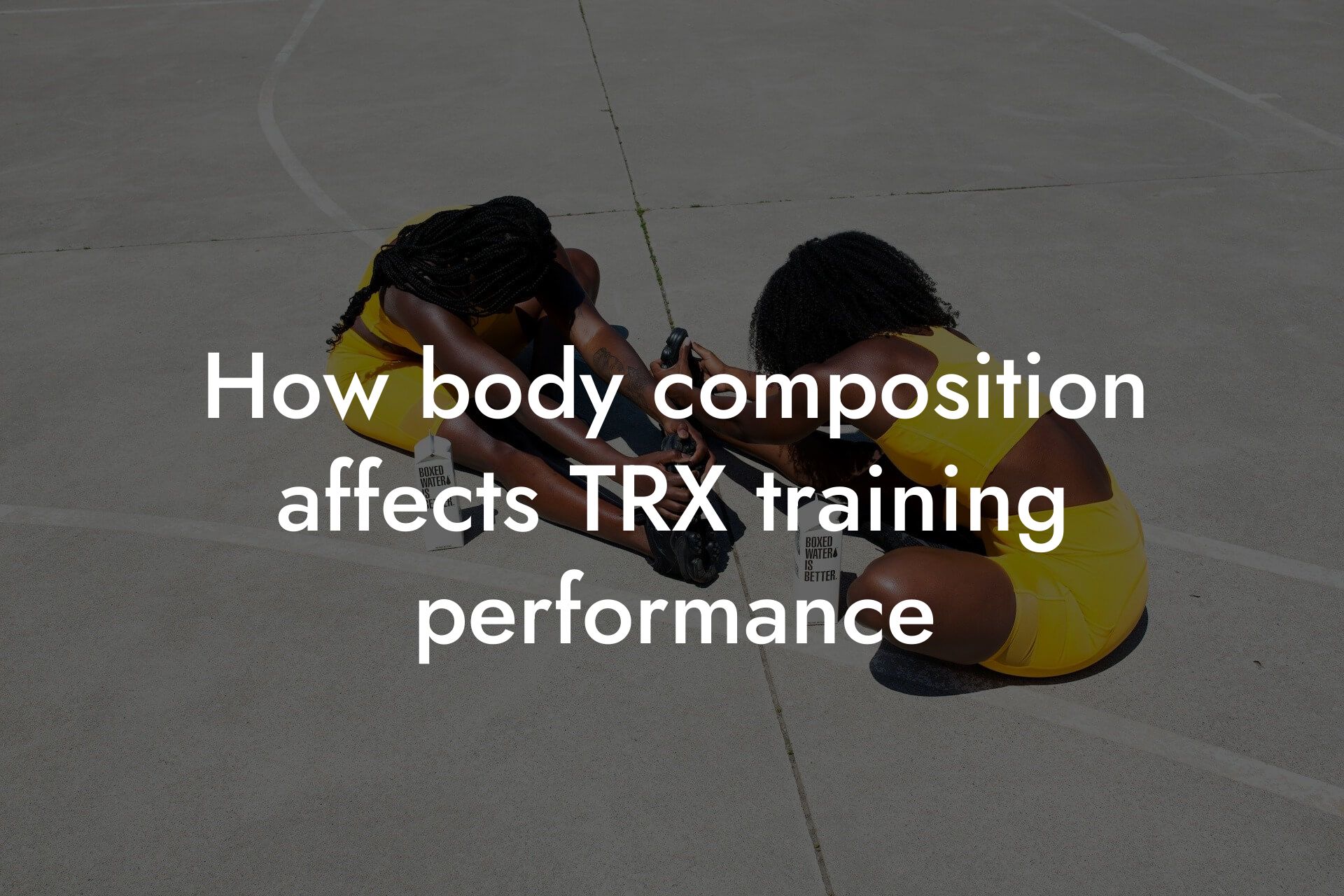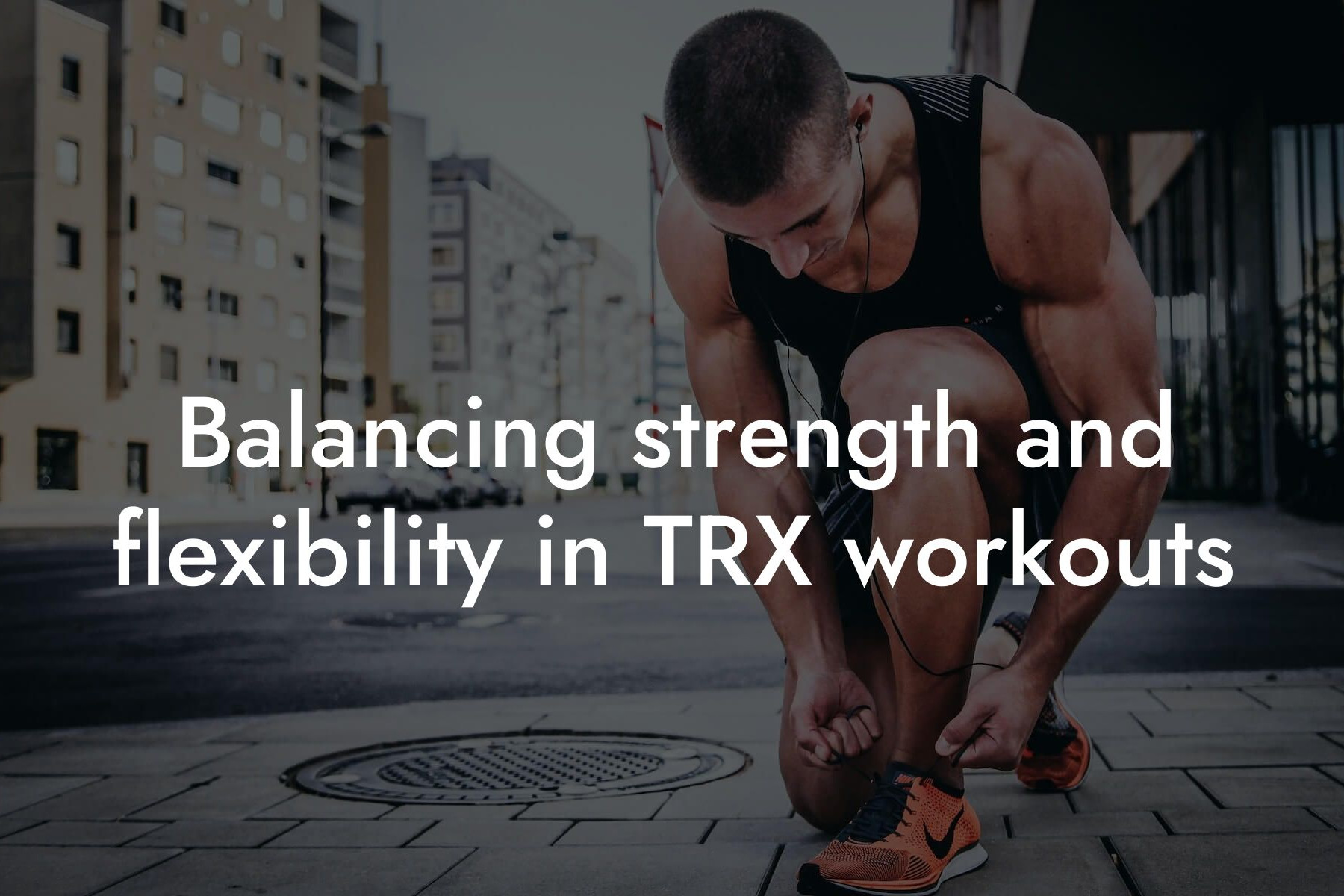What is TRX Training?
TRX training is a form of suspension training that uses your body weight and gravity to provide resistance. It's a popular form of exercise among fitness enthusiasts and professionals alike, as it can help improve strength, flexibility, and balance. TRX training involves performing exercises while suspended in the air using straps or ropes, which targets multiple muscle groups simultaneously. This type of training is known for its ability to engage the core muscles, improve posture, and increase overall functional strength.
Table of Contents
What is a DEXA Scan?
A DEXA (Dual-Energy X-ray Absorptiometry) scan is a non-invasive medical imaging test that measures bone density and body composition. It's commonly used to diagnose osteoporosis, track changes in bone density over time, and monitor the effectiveness of treatment plans. In the context of fitness and athletic training, DEXA scans can provide valuable insights into body composition, including lean mass, fat mass, and bone density.
Why Use DEXA Scans to Monitor TRX Progress?
TRX training is a form of resistance training that can help improve muscle mass and bone density. However, it can be challenging to track progress using traditional methods such as weight, body fat percentage, or measurements. DEXA scans provide a more accurate and comprehensive picture of body composition, allowing you to track changes in lean mass, fat mass, and bone density over time. This information can help you refine your TRX training program, make data-driven decisions, and achieve your fitness goals more effectively.
What Can DEXA Scans Measure?
DEXA scans can measure a range of parameters, including:
• Bone density: DEXA scans can measure bone density in various regions of the body, including the hips, spine, and total body.
• Lean mass: DEXA scans can measure lean mass, which includes muscle mass, bone mass, and water content.
• Fat mass: DEXA scans can measure fat mass, which includes visceral fat, subcutaneous fat, and other forms of body fat.
• Body fat percentage: DEXA scans can calculate body fat percentage based on lean mass and fat mass measurements.
• Regional body composition: DEXA scans can provide detailed information on body composition in specific regions of the body, such as the arms, legs, and trunk.
How Often Should You Get a DEXA Scan?
The frequency of DEXA scans depends on your individual goals and training program. If you're just starting a TRX training program, it's recommended to get a baseline DEXA scan to establish a starting point for tracking progress. From there, you can schedule follow-up scans every 6-12 weeks to monitor changes in body composition and adjust your training program accordingly.
What Do DEXA Scan Results Mean?
DEXA scan results can be complex and require interpretation by a qualified healthcare professional. However, here are some general guidelines to keep in mind:
• Bone density: A higher bone density score indicates stronger bones and a lower risk of osteoporosis.
• Lean mass: An increase in lean mass indicates muscle growth and development.
• Fat mass: A decrease in fat mass indicates weight loss and improved body composition.
• Body fat percentage: A lower body fat percentage indicates a leaner, more athletic physique.
How to Use DEXA Scan Results to Refine Your TRX Training Program
Once you have your DEXA scan results, you can use the data to refine your TRX training program and make data-driven decisions. For example:
• If your DEXA scan shows a decrease in lean mass, you may need to increase your protein intake and adjust your TRX training program to focus on muscle-building exercises.
• If your DEXA scan shows an increase in fat mass, you may need to adjust your diet and increase your cardiovascular exercise to burn more calories.
• If your DEXA scan shows a decrease in bone density, you may need to incorporate more weight-bearing exercises into your TRX training program to improve bone health.
DEXA scans are a valuable tool for tracking progress in TRX training. By providing a comprehensive picture of body composition, DEXA scans can help you refine your training program, make data-driven decisions, and achieve your fitness goals more effectively. At Tano Performance Group, we're committed to helping high-earning professionals like you achieve their physical goals and improve their overall well-being. Contact us today to learn more about our DEXA scan services and how we can help you take your TRX training to the next level.
Frequently Asked Questions
What is a DEXA scan and how does it work?
A DEXA (Dual-Energy X-ray Absorptiometry) scan is a non-invasive, low-radiation medical imaging test that measures bone density and body composition. It works by sending two X-ray beams with different energy levels through the body, which are then absorbed by different tissues. The resulting data is used to calculate bone density, lean mass, and fat mass.
What is TRX training, and how does it differ from traditional exercise?
TRX (Total Body Resistance Exercise) is a form of suspension training that uses your body weight and gravity to provide resistance. It differs from traditional exercise in that it engages multiple muscle groups simultaneously, improving functional strength, flexibility, and balance. TRX training is low-impact, making it an excellent option for those with joint issues or injuries.
Why is monitoring progress important in TRX training?
Monitoring progress is essential in TRX training to ensure you're achieving your fitness goals, whether that's increasing strength, losing fat, or improving overall health. By tracking changes in body composition and bone density, you can adjust your training program, nutrition, and recovery strategies to optimize results.
How often should I get a DEXA scan to monitor my progress in TRX training?
We recommend getting a DEXA scan every 3-6 months to track changes in body composition and bone density. This frequency allows you to monitor progress, make adjustments to your training program, and stay motivated.
What can I expect during a DEXA scan?
During a DEXA scan, you'll lie on an examination table, and the scanner will pass over your body, taking measurements. The entire process typically takes 10-15 minutes and is completely painless. You'll be asked to remove any metal objects, such as jewelry or glasses, and wear comfortable clothing.
Is a DEXA scan safe, and what are the risks?
DEXA scans are extremely safe, using very low levels of radiation – about 1/10th the amount of a chest X-ray. The risks are minimal, but may include allergic reactions to the X-ray dye (rare) or mild discomfort during the scan.
How does TRX training affect bone density?
TRX training can help improve bone density by stimulating osteogenesis (bone growth) through resistance exercises. This is especially important for individuals with osteoporosis or osteopenia, as increased bone density can reduce the risk of fractures.
Can DEXA scans detect muscle imbalances?
While DEXA scans can't directly detect muscle imbalances, they can provide insights into lean mass distribution, which can indicate potential imbalances. For example, if you have significantly more lean mass in one leg versus the other, it may indicate a strength imbalance.
How do I interpret the results of my DEXA scan?
Your DEXA scan results will provide a detailed report on your bone density, lean mass, and fat mass. A healthcare professional or certified fitness expert can help you interpret the results, identifying areas for improvement and creating a personalized plan to achieve your goals.
What are the benefits of using DEXA scans in TRX training?
The benefits of using DEXA scans in TRX training include accurate tracking of progress, identification of muscle imbalances, and optimization of training programs. DEXA scans can also help you stay motivated, as you'll be able to see the tangible results of your hard work.
Can I use DEXA scans to track my progress in other types of exercise?
Absolutely! DEXA scans can be used to track progress in any type of exercise or fitness program. Whether you're a runner, yogi, or weightlifter, DEXA scans provide valuable insights into your body composition and bone density.
How does body fat percentage affect my overall health?
Excess body fat is linked to various health risks, including diabetes, heart disease, and certain types of cancer. Maintaining a healthy body fat percentage through TRX training and nutrition can significantly reduce these risks and improve overall health.
What is the ideal body fat percentage for men and women?
The ideal body fat percentage varies based on age, gender, and athletic goals. Generally, for men, 8-19% is considered athletic, while 20-24% is considered fit. For women, 16-23% is considered athletic, while 24-30% is considered fit.
Can DEXA scans help me identify areas for improvement in my nutrition?
Yes, DEXA scans can provide insights into your body composition, which can help you identify areas for improvement in your nutrition. For example, if you have a high percentage of visceral fat, you may need to adjust your diet to reduce inflammation and improve insulin sensitivity.
How does TRX training affect my metabolism?
TRX training can help increase your resting metabolic rate (RMR), meaning your body burns more calories at rest. This is especially beneficial for weight loss and weight management.
What is the relationship between bone density and osteoporosis?
Bone density is a critical factor in osteoporosis, as low bone density increases the risk of fractures. TRX training, combined with proper nutrition and lifestyle habits, can help improve bone density and reduce the risk of osteoporosis.
Can I use DEXA scans to track my progress during pregnancy or postpartum?
Yes, DEXA scans can be used to track progress during pregnancy or postpartum. However, it's essential to consult with a healthcare professional to ensure the scan is safe and necessary.
How does TRX training affect my overall physique?
TRX training can help improve your overall physique by increasing lean mass, reducing body fat, and improving muscle tone. The functional movements and exercises in TRX training also improve flexibility and balance.
What are the benefits of working with a certified TRX trainer?
Working with a certified TRX trainer can help you optimize your training program, reduce the risk of injury, and achieve your fitness goals faster. A certified trainer can also provide personalized feedback and guidance on form and technique.
Can I use DEXA scans to track my progress as I age?
Absolutely! DEXA scans can be used to track changes in body composition and bone density as you age, helping you maintain optimal health and reduce the risk of age-related diseases.
How does TRX training affect my mental health?
TRX training can have a positive impact on mental health by reducing stress, improving mood, and increasing self-confidence. The social aspect of TRX training can also help reduce feelings of loneliness and isolation.
What are the benefits of combining TRX training with other forms of exercise?
Combining TRX training with other forms of exercise, such as cardio or strength training, can help improve overall fitness, increase caloric burn, and reduce plateaus. It can also help reduce the risk of overuse injuries and improve overall athletic performance.
Can I use DEXA scans to track my progress in athletic performance?
Yes, DEXA scans can be used to track changes in body composition and bone density, which can help improve athletic performance. For example, a DEXA scan can help identify areas for improvement in power-to-weight ratio, which is critical for athletes.
Here are some related articles you might love...
- Improving core strength with TRX training
- How body composition affects TRX training performance
- Balancing strength and flexibility in TRX workouts
- The importance of bone density in TRX fitness
- Strength training tips specific to TRX exercises
- Reducing body fat for better TRX workout results
- Nutrition tips for sustained energy during TRX sessions
- Maintaining muscle recovery with TRX training
- Preventing injuries during TRX training
Zak Faulkner
Zak Faulkner is a leading authority in the realm of physical health and body composition analysis, with over 15 years of experience helping professionals optimise their fitness and well-being. As one the experts behind Tano Performance Group, Zak has dedicated his career to providing in-depth, science-backed insights that empower clients to elevate their physical performance and overall health.
With extensive knowledge of DEXA technology, Zak specializes in delivering comprehensive body assessments that offer precise data on body fat, muscle mass, bone density, and overall physique. His expertise enables individuals to make informed decisions and achieve their fitness goals with accuracy and confidence. Zak’s approach is rooted in a deep understanding of human physiology, combined with a passion for helping clients unlock their full potential through personalised strategies.
Over the years, Zak has earned a reputation for his commitment to excellence, precision, and client-focused service. His guidance is trusted by top professionals who demand the best when it comes to their health. Whether advising on fitness programs, nutritional strategies, or long-term wellness plans, Zak Faulkner’s insights are a valuable resource for anyone serious about taking their health and fitness to the next level.
At Tano Performance Group, Zak continues to lead our Content Team revolutionising how professionals approach their physical health, offering unparalleled expertise that drives real results.




